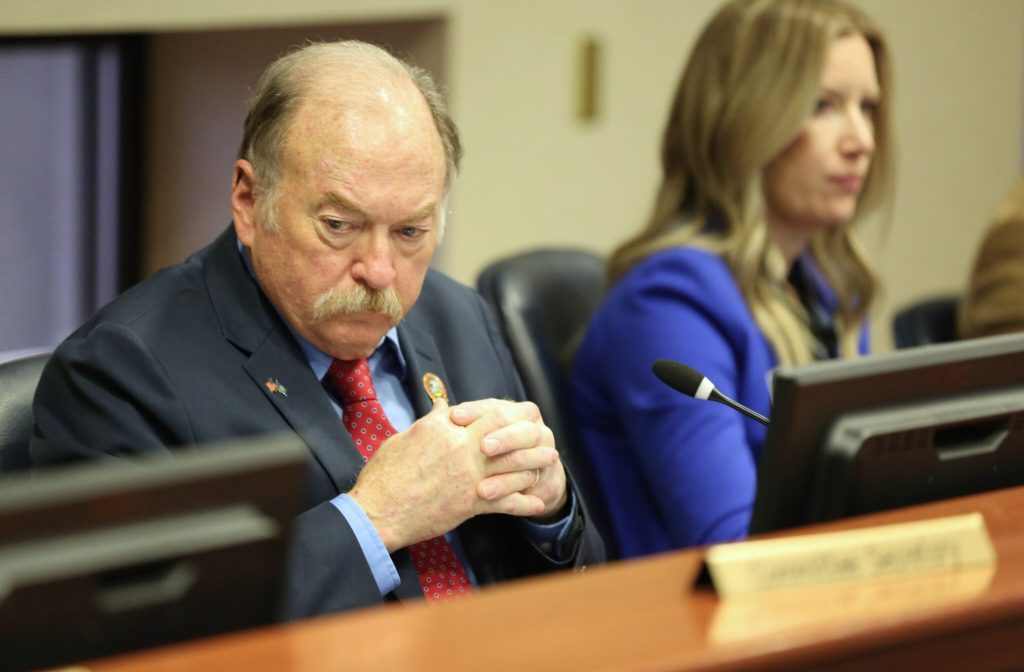PIERRE — A committee of South Dakota lawmakers advanced a bill 5-2 on Wednesday at the Capitol to reduce state funding for tobacco and vaping prevention efforts.
But the lawmakers softened the proposed cut following a debate over public health and budget priorities.
The bill, originally intended to slash annual funding for the state’s Tobacco Prevention and Reduction Trust Fund from $5 million to $2 million, was amended to set the new funding level at $3 million.
The bill is a priority of former Gov. Kristi Noem, and now Gov. Larry Rhoden’s administration. The Senate Health and Human Services Committee sent the amended bill to the Legislature’s budget committee with a positive recommendation.
Bureau of Finance and Management Commissioner Jim Terwilliger said the state needs to make budget cuts to help cover a $62 million increase in Medicaid costs.
Opponents of the bill, including public health advocates and medical organizations, warned that reducing tobacco prevention funding could undo years of progress in reducing smoking and vaping rates, particularly among youth.
Terwilliger said smoking rates have declined significantly in South Dakota over the past two decades.
“The $5 million that’s been spent has been successful, certainly, but you’re also looking at a smaller problem to tackle, if you will, in terms of tobacco prevention,” he said.
Terwilliger said the state receives $1 million annually in federal tobacco prevention grants, which will remain intact. The reduced state contribution would continue funding South Dakota’s QuitLine services and other prevention efforts, he said.
Public health advocates pushed back, saying the state is trading short-term savings for long-term costs in health care.
South Dakota voters approved a 2006 ballot measure to dedicate a portion of increased cigarette tax revenue to prevention efforts. Jennifer Stalley, a lobbyist for the American Cancer Society Cancer Action Network, helped make that happen. She warned that the bill undermines that commitment and could lead to a resurgence of youth tobacco use, particularly vaping and nicotine pouches.
Stalley said the state is spending $5 million to fight a $75 million annual problem in smoking-related health care costs, driving up the cost of Medicaid.
“Taking our foot off the gas right now, because we’re doing well, isn’t going to make sure that we are successful,” she said. “It’s going to make sure that in five years or 10 years – hopefully, not me – we’re going to be back here going through this litany of asks again to get back to a successful program.”
Kim Malsam-Rysdon is a former secretary of the state Department of Health and a current Avera Health lobbyist. Avera has a contract to manage the state’s QuitLine program. She said it is one of the most effective in the nation with a 49% long-term success rate.
“We need to continue to fund these services. We also need to continue our other prevention services so that people never have to get to the QuitLine,” she said.
Sen. Tim Reed, R-Brookings, successfully proposed the amendment to set the new funding level at $3 million instead of the originally proposed $2 million. He said the change is a compromise that acknowledges budget constraints while hopefully preserving key prevention efforts.


